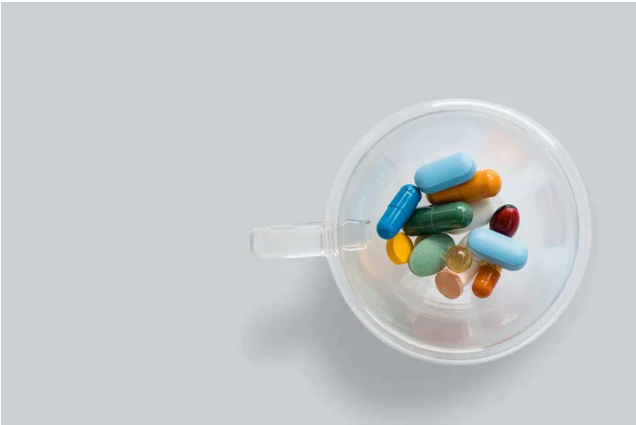
As a parent, you must feed your children foods rich in the vitamins they need to grow and develop.
You probably read all the information on the labels of the products you buy and use at home because you need to make sure that they meet the quality and safety standards you have set for your family.
How Are Vitamins Made in Nature?
The bodies cannot produce most of their own vitamins. Many plants produce vitamins as they grow. Most vitamins can be found in plants.
As a plant grows, it receives nutrients from the soil and receives energy from sunlight.
It uses energy to convert its nutrients, causing the plant to grow and produce more compounds, phytonutrients, and enzymes as it reaches maturity.
Vitamins naturally occur as a result of this process.
Vitamins such as vitamin B12 are mostly found in foods of animal origin, made and stored in the animal's body which then produces beef, milk, eggs, fish, or shellfish.
Animals do not directly produce vitamin B12 . In contrast, bacteria that regularly come into contact with them will produce B12 which eventually ends up in animal food products. Vitamin D is uniquely made in nature.
The human body acts like a plant, converting energy from the sun into vitamin D. It may not be wise to use the sun exclusively as a source of vitamin D, as UV rays can be very damaging to the skin.
Sunscreen inhibits the body's ability to produce its own vitamin D, making the sun a major source of ineffective or unsafe vitamin D.
How Are Vitamins Made for Vitamin Supplements?
The vitamins in your child's multivitamin supplement can come from two sources. They come from foods that are naturally rich in these vitamins or are synthetically synthesized in medical laboratories.
Vitamins of Natural Origin
Vitamins can be extracted from food. For example, oranges are very high in vitamin C. Medical laboratories can extract vitamin C from oranges and produce a concentrate, mixing it with other vitamins or binders to make precise single-use doses.
Vitamins are often extracted with food-safe solvents. Solvents and other nutrients, sugars, and carbohydrates naturally found in plants are purified from the final extraction, leaving only the vitamins.
Raw vitamins may appear similar to crystals or rock salt before they are granulated and mixed into the final product.
Synthetic Produced Vitamins
Synthetic produced vitamins use inorganic materials to produce structurally identical vitamins. The compounds in this ingredient are scientifically rearranged to perfectly mimic and duplicate the structure of vitamins found in food.
When you ingest it, your body can use it almost as well as natural vitamins.
While synthetically produced vitamins may sound unpleasant, they are safe and sometimes necessary. Children with dietary restrictions or allergies may not have vitamins or minerals derived from animal products.
Synthetically produced vitamins allow children to receive adequate amounts of vitamins without compromising their health, safety or lifestyle.
How Are Vitamins Made Into Supplements?
When you buy a bottle of multivitamin, it is evident that there is no loose powder or liquid in the container. Vitamins are pre-measured into appropriate doses and formed into tablets, capsules, soft gels, or gummy.
Vitamins are granulated to make their particle size very small.
These particles are then combined and thoroughly mixed into one batch. The vitamins from the batch will be placed into capsules, pressed into tablets, or cooked into gummy.
Gummy vitamins undergo a lot of additional processing. Sometimes artificial in nature, colors and flavors are combined with the same ingredients used to make gummy candies, such as sugar, pectin, and gelatin.
The combined vitamin powder is tossed into the mixture before being poured into molds and allowed to harden.
What Kind of Vitamin is Best for Your Child?
The best way to provide vitamins and minerals to your child is through food . Meeting the recommended daily value of each vitamin (or at least close to it) is possible with a balanced diet and some small nutritional powerhouse snacks.
Unfortunately, this goal is not always possible to achieve.
Some children are great eaters. They have no allergies or intolerances, and they are willing to try a wide variety of foods. However, many children, especially toddlers and very young children, are quick to state their preferences.
Anything they don't like is considered inedible and immediately removed from the plate.
Children with food allergies or intolerances may not be able to have many of the foods that most parents rely on. Dairy foods, eggs, seafood, wheat, peanuts, tree nuts, and red meat are valuable sources of many important vitamins and minerals needed for early childhood development. If these foods are not available, they carry their nutritional value.
This can be a cause for concern for many parents. They want to see their children healthy and thriving, and obstacles are sometimes difficult to overcome.
Is There a Difference in Vitamin Quality?
As found in dollar stores, inexpensive vitamins are often synthetic vitamins made with low-quality ingredients. While they may be better than previous vitamins entirely, it's not unreasonable to expect that the same level of quality and care is used to produce the budget vitamins you'd expect from more expensive vitamins. Consumers often get what they pay for.
Reading the ingredients list and expiration date will reveal the whole picture.
Vitamins may have aged and decreased in quality. They may be packed with cheap fillers or artificial preservatives. They may have been manufactured with "bioengineered ingredients," which would be misleading to reveal that the product was made using GMO plants.
If the price point is very low and you can't find any positive information about the brand, you shouldn't take the risk. It is possible that this vitamin was manufactured overseas in a country where the rules and regulations are much looser than United States standards.
Often, there is no way to tell if these vitamins are free of contaminants such as solvents or heavy metals. The vitamin content listed on the bottle may not be accurate.










